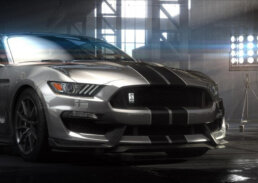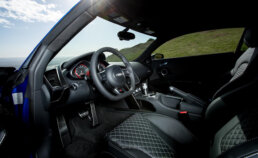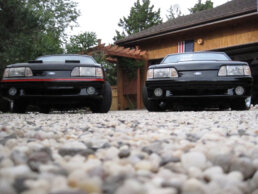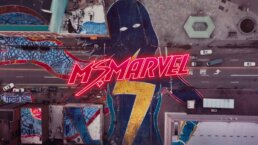I have been going to CES for many years now. But in the last 3-4 years I have witnessed an explosion in the automotive “sector” at CES. From a couple of cars in a corner of the expo to a full section with multiple vehicles on display like something out of SEMA. I’m going to hit on a couple of topics that alone can be a single topic of conversation. Here are some quick insights and topics that could easily become greater conversations in some future blogs I release. We’ve been lucky enough to work with 4 major automakers who are paving the way for the automobile of the future. Even though all of them have different brand attributes, they all face similar challenges.
1. How do you make the auto more “evergreen”?
2. How do they deliver the same content in a unique way?
Of course everyone needs to get from point A to point B but how can these companies make it unique and ever changing. Since the automobile could be labeled as the ultimate tech gadget. It becomes an even more vital part to the owners life and everyday activities. Most of us keep our cars between 4-6 years which is well past the time we keep our other devices like smartphones and tablets. This is a difficult challenge for auto manufacturers.
HOW DO YOU MAKE THE AUTOMOBILE EVERGREEN? Of course technology and connectivity is a huge driver to some of the ideas expressed here (I cant confirm nor deny any of these concepts showing up in vehicles released in the future:). One key ingredient for auto sustainability is the ability of the car to learn. It must learn the habits of all the drivers whether its for a single user or an entire family. Its taking even the smaller “driver presets” to a different level. For example: the vehicle should automatically know just by voice or proximity who is about to drive- setting the seat, mirrors, radio, navigation, temperature and driving mode to fit that specific user. Currently I need to hit 4 buttons for all this to adjust.
WHY! Why do I need to shift the car into snow mode – it should automatically know from the temperature or the satellite data. I should easily just be able to ask it to shift modes or it could ask me if I want “Snow Mode’. The ability of the vehicle to adapt to the user is only going to become increasingly more important. We are seeing an increase in user adaptability realms, especially within the usability and technology innovation areas with all of our automobile partners we are currently conceptualizing with.
ADDING A LEVEL OF CUSTOMIZATION: Manufacturers should go about this cautiously but they must include customization that is functional and smart into these vehicles. For example, why not craft a modular cluster of gauges that fit within a specific layout but that can be customized by the owner. The owner can either create a design themselves through a web based platform that the automaker can create or have preset galleries for different personality types to select from. In both these scenarios the car owners get to customize their car with these uploads, keeping their cars relevant and fresh. In all fairness, automakers can then charge a small fee for a feature like this. Upgrading and customizing should be as easy as changing the oil at your dealer. This could create a separate, ongoing revenue long after the car is sold. BUT they better deliver something special. I know I would love to use a tool like this for a car I just purchased. I would constantly be changing designs and modes just based on my mood or the location I was going to. On the other hand I have friends and colleagues that could care less about the gauges but worry more about connectivity and music. Another interesting aspect is how “pop culture” can play a role into customization. I always thought the “vase” slot for “flower power” in the VW Beetle added a nice personal touch that a VW owner can change at will. Same vase but different personalities use it very differently when it comes to flowers or even a basic pen holder. Simple but a very smart design concept.

Why not go so far as to get celebrity (actor, Dj’s, athletes) inspired designs to be digital accessories into the car. This would be a great way to cross pollinate creativity and keeping the owner continuously excited about their car. Somewhat adapting Nike or UA and how they embrace athlete inspired designs to help sell apparel. . Can you imagine purchasing a Mustang GT350 (below) with UA seats? Gives new meaning to the words muscle car!

These designs can start simple – from a gauge to a clock accessory that easily swaps out of its holder for a different one. Reminds me of the old Swatch watches that gave you the ability to swap faces or wristbands keeping your “everyday” watch relevant and fresh!
INFORMATION DELIVERY WITH A UNIQUE PURPOSE: Every single automaker may use different sources of where data is gathered but essentially they are all delivering the same data to the drivers. We are facing similar objectives with our TV and Cable partnerships, conceptualizing interesting and thoughtful practices to deliver content with a user-centric focus. Our automaker partnerships are very different in project scope but they all have one fundamental problem – they must solve a visualization challenge.
The single and most direct way to differentiate themselves from all the rest is DESIGN! How a driver gets the information needed during their journey- how they can see it clearly, what are the levels of information and their importance that need to be displayed. All this and more while always keeping the drivers safety at the forefront. These are just some of the questions we ask ourselves but essentially it comes down to smart very well thought out -design. Apple amassed its cult following by its design.. Every time they release a product it’s an event. Other popular brands grew exponentially because of their design. Dyson/Simple Human/ UA.
Quick shout out: Audi needs to be recognized as redefining the interior of the car. They combined beautiful design with elegant complexity in a perfect pairing for any Audi owner. The perfect meal with the perfect bottle of wine. How much gadgetry you want depends on how technically involved with your Audi you want to be. Automakers are taking note and realizing how effective good design can be.

NAVIGATION: Everyone who owns a smartphone has a navigation tool at their fingertips. Automakers need to take advantage of the smart aspects of all these apps and roll them into one super functional design into the cars navigation. Of course Government regulations and safety restraints slow this process for good reason but the pace of these releases can be dramatically improved. Improved voice recognition is crucial as well as the vehicles ability to store and use intricate data that becomes a library of preferences for the user of the car. Integration from the users calendar, emails and other “everyday” data is crucial. Knowing where they are going before getting into the vehicle needs to be embraced and implemented, this enhanced connectivity needs to go beyond blue tooth for playing music. Imagine if you were able to tell your car what your “day” looks like. I know my weekend would be much easier if I told the car all the activities planned and the vehicle was able to tell me the best route and order of what actions I should take throughout the day. Basically telling me the fastest route to all my destinations wasting little of my time. Everybody wants more time, right? Making the vehicle become an intricate part of the family on a digital spectrum will only increase the value. Right now it’s a race but the few companies that figure it out quickly will be far ahead of the rest.
AUTONOMOUS OR NOT? Being a visionary I love the technology aspects and possibilities of what the autonomous car is capable of but personally this is a tough one for me to answer. I currently own 2 old (90’s) Mustangs that I love to drive. I still enjoy shifting my 5 speed and smelling the fumes from the exhaust. Call me an old fashioned gearhead but I know I’m not the only one. Because my weekdays are on the train commuting I look forward to driving on weekends. Especially when it comes to leaving a little rubber on the road:).

BUT the idea of an autonomous car also intrigues me. I would love nothing more then to “call” my car on a snowy or rainy day to come pick me up from the train. One of the important aspects that I believe to be important in modern day and futuristic cars is tactile interactivity. I love technology but I also love to still grab a switch or turn a knob for certain things. Finding that harmony between these 2 components is something necessary. At least it’s a feature I try to look for when reviewing a concept car or a new vehicle being released. Of course the safety aspect is huge! Eventually I picture an autonomous car “rail system” where traffic will be dictated and controlled safely by massive network sharing data at mega speeds. Vehicles will just become more connected and smarter with this network connectivity. What happens with Flo from Progressive or Jake from State farm when accidents are minimal and coverage will be a lot cheaper…
THATS A WRAP.. FOR NOW: All of this technology and connectivity is very exciting for the future of the automobile. Of course it brings up a host of other questions like security, “legal” driving age, transportation for the elderly and many others.. Here is an interesting link to a TEDx talk by Christian Gerdes from Stanford. I appreciate his use of the race car driver. https://www.youtube.com/watch?v=Vo9Qz0_TwhE
Danny Gonzalez
Daniel Gonzalez started his career at R/GA after graduating from St. Johns University where he received a BS in Business. For 6+ years he lead the visual effects team for feature films, global ad agencies and broadcast networks. In the Fall of 2001, Gonzalez co-founded Perception with an RGA colleague, Jeremy Lasky. They formed a motion graphics studio that lead the revolution in creating groundbreaking design and visual effects on the desktop. Now in it's 18th year, the studio has sharpened its focus to become global experts in designing futuristic UIs for both feature films and for the most powerful brands in technology. From Iron Man to IBM, from The Avengers to SpaceX, the studio has an extremely unique niche that truly bridges the gap between science fiction and science fact. Gonzalez co-leads new business initiatives, shapes the company’s growth, while overseeing a full-time staff of 15.
Perception has been featured on Engadget, Art of the Title, Cinefex, Gizmodo, ACM Siggraph, ADC nominated at SXSW for Best Title Sequence and twice nominated for an Oscar for Best Visual Effects. Gonzalez has lectured/guest speaker on design and technology at OTIS, SCAD, Boeing, Carnegie Mellon’s ETC and NYU ITP. He's also given presentations and workshops at some of the biggest tech giants in the world including Samsung, SpaceX, Intel, Microsoft, GE, Northrop Grumman, Audi, Mercedes, Ford, Chrysler and Apple.
Gonzalez’s past work has been showcased on the film screen and televisions across the world, while Perception’s work can be experienced on the big screens, in smart homes, automobiles and mobile devices across the planet!


